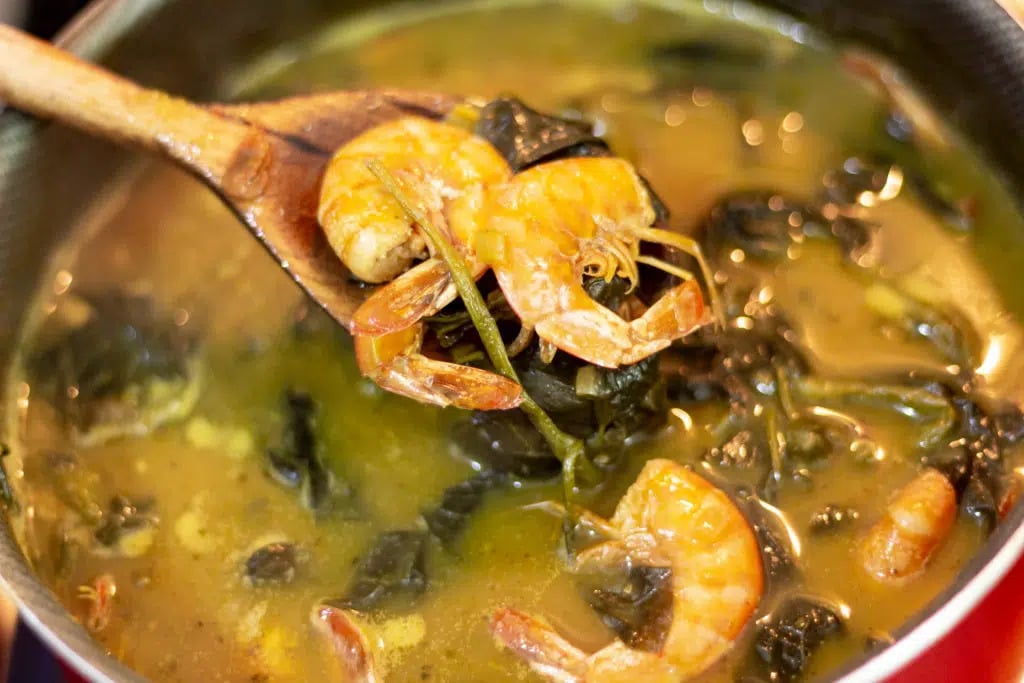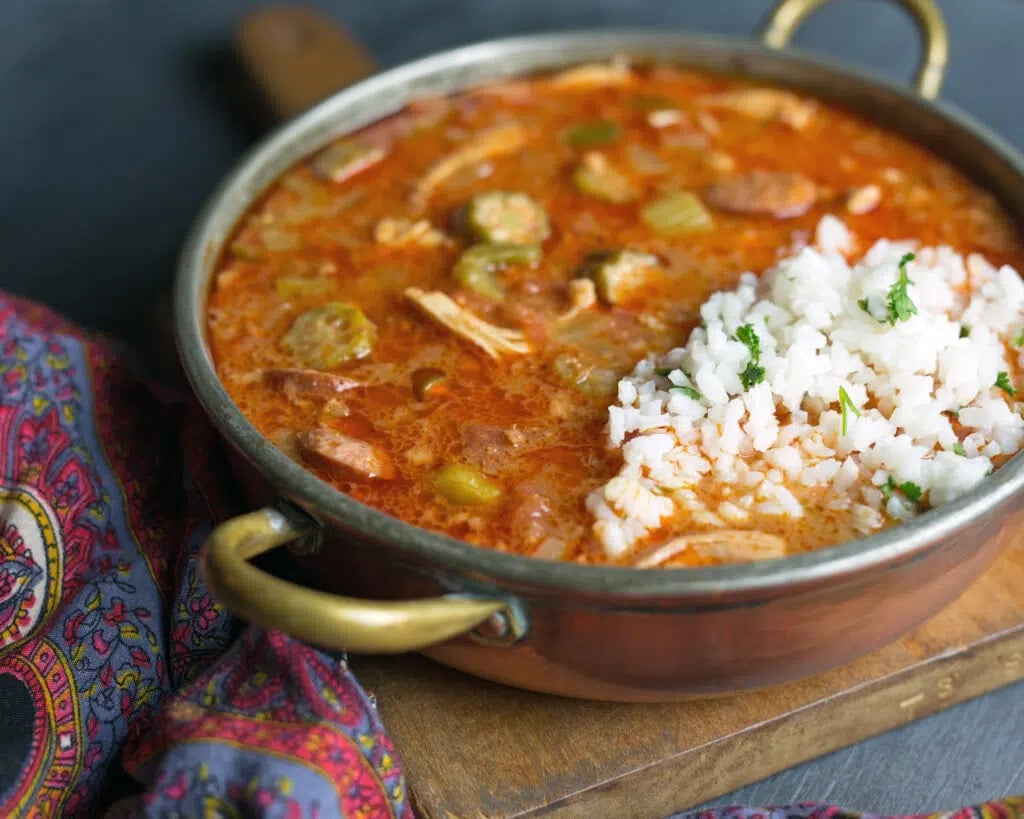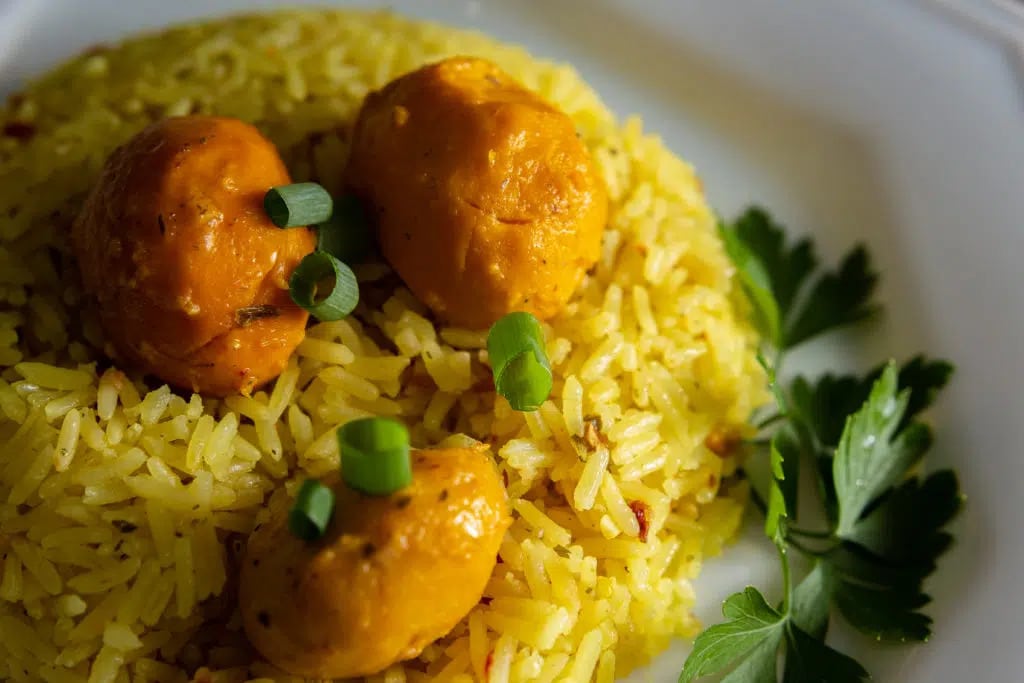
As the largest South American country—in both size and population—Brazil is a melting pot thanks to its many cultural influences. Because of this, traditional Brazilian food is incredibly diverse and varies from one region to the next, with unique Brazilian dishes found everywhere from Espirito Santo to São Paulo.
Brazilian cuisine has its origins with the country’s indigenous population, African cultures, Portuguese colonizers, and immigrant groups from Asia, Europe, and elsewhere. From rice and beans to popular street foods, Northern fish stews, and churrasco, Brazilian cuisine is worth getting to know.
Whether you’re moving to Brazil, missing the taste of home after immigrating, or just a foodie, read on for more of Brazil’s classic dishes.
1. Feijoada

Feijoada was created by enslaved Africans in Brazil in the 16th century. It’s since become a staple for all Brazilians and is now the national dish of Brazil.
Feijoada literally translates to “big stew” (feijão is the word for beans in Portuguese). It’s made of slow-cooked black beans and meat. Traditionally, the stew includes pig’s ear, feet, and snout, but it can contain sausage, bacon, or ribs as well.
“Feijoada completa” means the stew comes with orange slices, rice, tomatoes, onion, chopped greens like collard greens, and farinha, or toasted manioc.
Farofa is a common side dish eaten with feijoada. It’s made of toasted cassava flour that you can sprinkle on top of the stew to soak up extra flavor.
2. Tacacá

Tacacá is a traditional soup from the northern region of Brazil. It’s known for numbing your mouth because it contains jambú, a leaf with anesthetic properties.
Other common ingredients include dried shrimp, tucupi (cassava), alfavaca (basil from the Amazon), manioc, and hot peppers.
Thought to have medicinal properties, the soup is usually served in a gourd known as a cuia and sipped straight from the bowl.
3. Pato no tucupi
Found mostly in the city of Belém in the north of Brazil, pato no tucupi consists of duck cooked in juice extracted from cassava. Called tucupi, you need to boil the juice for several hours before using it—otherwise, it’s actually poisonous.
This recipe comes from Brazil’s indigenous population, and is usually served once a year during Círio de Nazaré, a Catholic festival honoring the Virgin Mary.
4. Frango com quiabo

Frango com quiabo, or chicken with okra, is a traditional Brazilian dish that comes from the Southeast of Brazil, in places like Rio de Janeiro and Minas Gerais.
The recipe was first introduced by Africans in the 15th century and consists of chicken cooked in a stew with okra, tomatoes, and other vegetables. The dish was famously enjoyed by Anthony Bourdain in his food and travel show Parts Unknown.
5. Baião de dois

Typically eaten in the northeastern Brazilian states of Rondônia, Acre, Amazonas, and Pará, baião de dois is a dish of rice and beans (usually green beans, string beans or black-eyed peas). The rice is cooked in bean broth so nothing goes to waste.
The name actually translates to “baião for two,” baião being a dance that’s performed closely together, just like the rice and beans in the recipe.
Depending on the region, you might find baião de dois cooked with bacon, Brazilian cheese, cilantro, and chives.
6. Açaí

Açaí is a type of berry that’s native to South America, and in Brazil, it’s often served in a thick, iced smoothie topped with fruits or granola. Brazilians eat açaí on a wide range of occasions and enjoy it for breakfast, on the beach, or as a dessert.
Açaí is often considered a superfood because it’s packed full of vitamins, iron, calcium, and antioxidants, giving it purported health benefits.
Fun fact: Hearts of palm and açaí berries come from the same tree, although you wouldn’t necessarily want to use them in the same recipe!
7. Moqueca de peixe

Moqueca de peixe is a seafood stew from the state of Bahia in northeast Brazil, and like many recipes from that region, it hails from Afro-Brazilian culture. Traditionally made in clay pots, moqueca is both creamy and spicy.
To make it, sautée garlic, onion, tomatoes, and sweet bell peppers in olive oil, then pour coconut milk over the top. Next, stew seafood, such as prawns, crab, or lobster, in the broth. Serve it over rice or pirão—a creamy porridge made from manioc flour.
8. Tainha na taquara
Tainha, or mullet, is a fish found across Brazil. But this dish—tainha na taquara—is only found in the south of Brazil, especially Porto Alegre in Rio Grande do Sul.
To make this dish, place the fish between skewers and roast it on firewood. Then, season it with garlic, oil, butter, chili pepper, and lemon. This Brazilian dish is most often served with white rice.
9. Barreado
Barreado is one of the most traditional dishes you can find in the state of Paraná, in the southern region of Brazil. It dates back over 300 years to an Azorean ritual brought to South America by settlers from Portugal.
The dish consists of beef slow-cooked in a clay pot for 12 hours or more. It’s served over rice and topped with plantain. Barreado literally translates to “covered in mud” and refers to the way the clay pot was traditionally sealed with manioc dough and ash as it was cooking. It’s now commonly enjoyed during the pre-Lent Carnival season.
10. Arroz com pequi

Pequi or “souari nut” is a fruit that’s native to the Cerrado region of Brazil. This fruit has a unique taste and painful “spikes” that can poke the inside of your mouth if it’s not prepared properly!
Arroz com pequi simply means “rice with souari nut.” To make it, Brazilians cook the rice with the fruit to give it a yellow color and a bittersweet taste.
11. Bonus: Caipirinha

Caipirinha is the national drink of Brazil. Although it’s not technically a dish, it pairs well with many popular Brazilian dishes, and it’s easy to make at home.
You only need three ingredients to make caipirinha: sugar, lime, and cachaça, a liquor distilled from sugarcane that’s produced exclusively in Brazil.
They’re mixed together to create a potent and refreshing drink that’s served cold.
Try these Brazilian dishes and more at home
From arroz com pequi to moqueca, from acarajé to pão de queijo, Brazilian cuisine has a lot going for it. And the dishes above are just a small sampling.
If you’re looking for more delicacies to try, check out Brazilian desserts like:
- Beijinho, or coconut fudge truffles
- Brigadeiro, a confection covered in chocolate sprinkles
- Bolo de rolo, a rolled cake with guava or passion fruit.
Prefer savory flavors? Try snacks like pastel, coxinha, and pão de queijo (Brazilian cheese bread). If you’re gluten-free, go for tapioca, a dish that’s usually served folded in half with savory fillings, similar to a French crepe.
